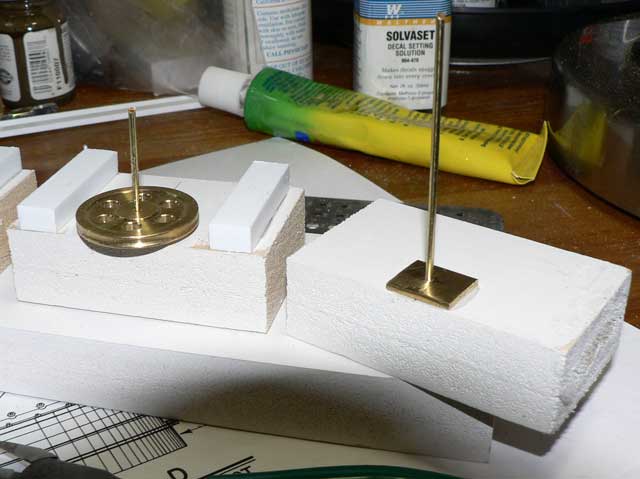I needed a way to turn my locomotives with my new RR design - an out and back. I became inspired when I got some plans for the EBT Turntable at Orbisonia.


I settled on a 3 foot diameter turntable. Using 1x3 TUF board (a composite plastic), I cut two long side pieces and two shorter ones for top and bottom; then tapered the two side pieces.

For my pivot, I got some parts from McMaster-Carr: 2 delrin sleeve bearings, a 3" steel rod, and a collar to hold the rod in place. Here it is shown upside down…

My idea was to make this a continuous 3 point balance turntable, with wheels on each end contacting the rail. I used some brass pulleys from my scrap box along with a brass rod for an axle. These were sandwiched between two spacer blocks.


Finally, I added plastic “T” beams along the bottom, and vertical angles along the sides. These were held with glue; then escutheon pins - to give the idea of rivets.
A styrene hatch (held on by bolts) covers an access hole in case I ever need to get to the collar holding the pin in place. …to be continued…
















